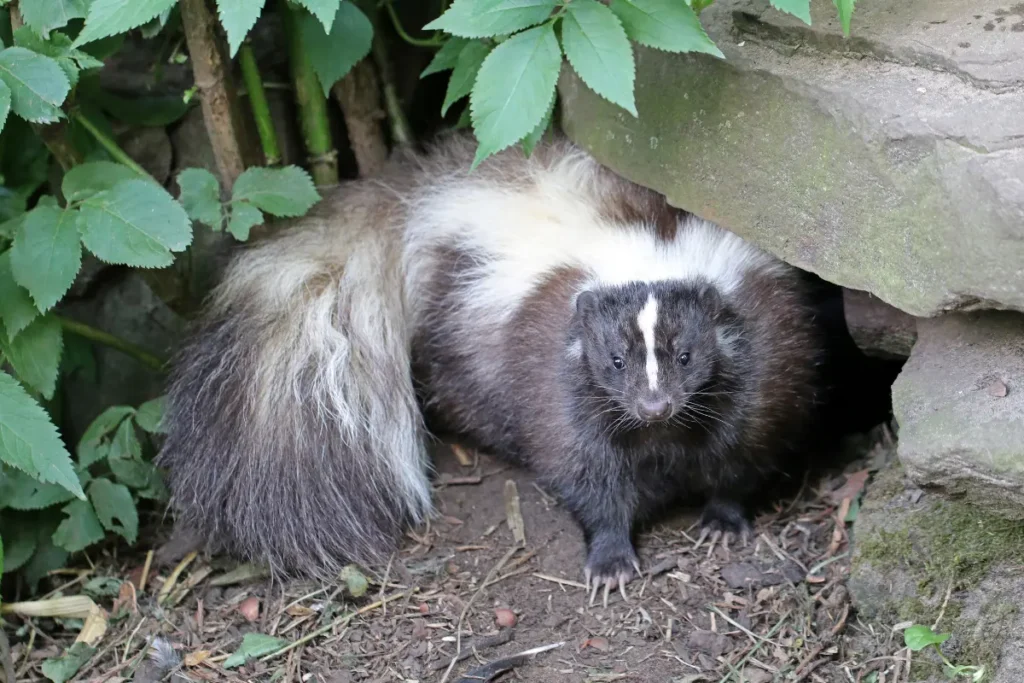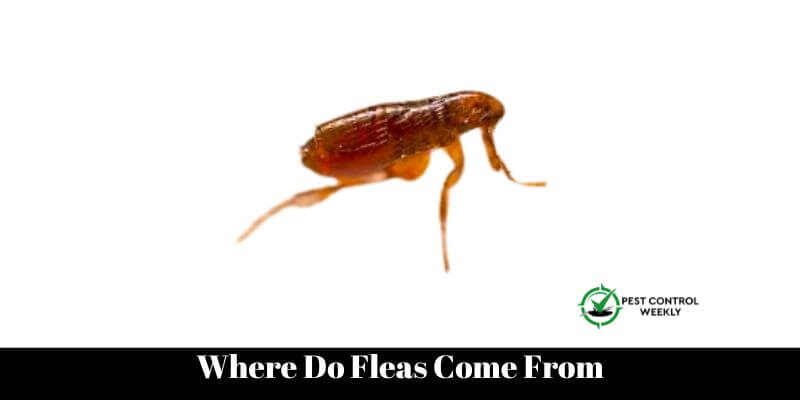The most prevalent external parasite of domestic animals is the flea. Numerous flea species can live on dogs, but Ctenocephalides felis, also known as the cat flea, is the most common flea species that both cats and dogs encounter. But Where do fleas come from?
Fleas come from an animal that has an infestation. When pets enter the house to visit or sleep, they quickly spread among various animals and find their way inside.
Fleas are often located outside in shaded regions, among long grass or bushes, waiting for a host to pass by. Read the article below to learn more about the origin of fleas.
Where Did Fleas Initially Come From?

Most flea families developed after the Cretaceous epoch, in the Paleogene and beyond. The southern continental region of Gondwana is where modern fleas most likely evolved and soon migrated north. The likelihood is that they initially served as hosts for mammals.
Fleas eat a variety of warm-blooded animals, such as dogs, cats, rabbits, raccoons, rats, mice, birds, and even humans. Typically, fleas can only reproduce on one host species.
The bird disease Ceratophyllus gallina affects both domestic and wild birds. Avian fleas that prey on a range of hosts have been shown to parasitize only species with weakened immune systems. In addition, consider how closely a potential host relates to the flea’s original environment.
Where Do Fleas Naturally Occur?

Fleas prefer damp, chilly, and shaded areas outside. They grow best in shady locations and on open grass, but they also enjoy shrubs, leaves, and trees. They can survive for up to three months without a blood meal from a host, so they pose a risk even when your pet is not exposed to them.
Fleas have flat bodies and strong legs that enable them to jump 100 times their height. When they locate a host, they jump up and latch on to the animal before moving to areas of the abdomen, joints, and under limbs where the host cannot easily scratch them with claws or bite them. Fleas typically nest in areas that are difficult for an animal to scratch or bite at with its claws or teeth.
Where Do Fleas Come From If There Are No Pets?

It is possible to get fleas even if you do not own a pet. One reason is that if the former owner or tenant had pets, those pets might have had fleas. They left the carpeting covered in fleas after they moved out.
The fleas remain inside their cocoon until they detect vibration in an instance like this. They have months to wait. Those fleas are now adults searching for food. Without a dog or cat, humans are the best option.
Another possibility is that stray dogs and cats spread flea issues to decks, porches, and areas around the doors of homes.
When wildlife like skunks, squirrels, raccoons, or opossums spend time near your home, in the attic, or in your crawl space, they may leave behind adult fleas or flea eggs. Rats and mice are capable of bringing fleas into your house.
Where Do Fleas Come From On Indoor Cats?

Yes, fleas can infest indoor cats. The family dog or any pet that enters the house after spending time outside is the most prevalent source of flea infestations in indoor cats. Cats can also get fleas from nearby pets and wild animals, including skunks, raccoons, possums, squirrels, and birds.
Unfortunately, fleas are hardy and cunning little creatures, making it very simple for cats to get fleas even indoors.
Flea bites are painful and irritating. Unfortunately, both people and other domestic pets are susceptible to them. Your cat may have picked up fleas if you’ve observed him scratching or biting his skin more frequently recently.
Frequent scratching, hair loss near the tail and head, itchy skin around the neckline or armpits, and even scabs on the fur from excessive biting are all signs of flea infestation in cats.
Where Do Fleas Come From On Dogs?

Fleas can infest dogs in a variety of ways. One method involves coming into touch with other dogs that are flea-infested when out on a walk, playing at the dog park, or having a playdate at another dog’s house.
Additionally, fleas might enter your home to infest your dog by sticking to your shoes, socks, and pant legs. Fleas are also quite experienced jumpers! Fleas can still squeeze through screened-in windows and doors.
Dogs can pick up fleas from the grass in your backyard, usually from other animals like raccoons, foxes, or mice that move through the region and spread the parasites to the ground.
Where Do Fleas Come From In The House?
The most typical way for fleas to enter your home is by a cat or dog attracting and bringing fleas into your home. Fleas can enter by a different path, though. They might enter with an old piece of furniture or with the skin and clothes of a victim who has already been infected.
Fleas do not generally use humans as hosts but may enter the home through humans. Fleas can also enter our homes without hosts, though. They can enter a house through window screens and floor cracks since they are so tiny.
Even if your house is clean, you can still cope with a flea infestation. When fleas enter your home, you might become aware of them when your pet behaves abnormally.
Conclusion
The earliest ancient species possessed armored mouthparts to attack thick skin. In the Jurassic period, more than 150 million years ago, primitive fleas were developed to feed on the blood of dinosaurs. Fleas may jump onto your pet’s fur from the fur of another pet or contaminated grass or dirt outside. More fleas may invade your home if the fleas breed.
The most frequent method for fleas to enter your home is through a cat or dog that draws them in. They might enter with a used piece of furniture or by using the skin and clothing of an infected person.
References
Ferreira, F.C., Fonseca, D.M., Hamilton, G. et al. Metagenomic analysis of human-biting cat fleas in urban northeastern United States of America reveals an emerging zoonotic pathogen. Sci Rep 10, 15611 (2020).
Genetic Evidence of an Isolation Barrier between Flea Subspecies of Citellophilus tesquorum (Wagner, 1898) (Siphonaptera: Ceratophyllidae)

